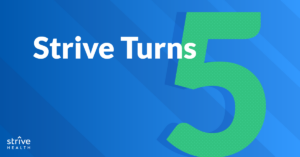How MA Plan Executives Can Effectively Respond to Rapid Increases in CKD and ESKD Enrollment
Author : Strive HealthBy Sarah Katz, National VP, Payor Partnerships
The 21st Century Cures Act, which allows newly diagnosed end stage kidney disease (ESKD) patients to enroll in Medicare Advantage (MA), has prompted many MA plan leaders to monitor enrollment trends and explore options to manage this complex and high-cost population. Although the desire for a measured approach is understandable, early evidence of increasing enrollment — for both ESKD and chronic kidney disease (CKD) — and corollary financial challenges indicate a more urgent and tactical response is required.
ESKD enrollment increases show no signs of slowing
The portion of ESKD patients enrolled in MA increased from 23% to 30% in 20211, the first year the ESKD enrollment provision was in effect. Although substantial, it’s likely enrollment gains will accelerate further as ESKD patients continue to learn about the benefits of MA (e.g. maximum out-of-pocket limits, supplemental benefits) and the dampening effect of COVID on open enrollment plan changes lessens. In our discussions with industry leaders, we regularly hear of enrollment increases of more than 200% from 2021 to 2022.
CKD enrollment is also rising in line with demographic shifts
The impact of increased ESKD enrollment is compounded by an uptick in enrollees with CKD. With 11,000 Americans aging into Medicare daily and almost half of them opting into MA, plans are experiencing rapid growth in members with CKD, a disease which disproportionately impacts the elderly. Our analysis of industry data suggests that CKD enrollment gains are on par with or higher than ESKD, with plans experiencing >200% annual growth.
Since CKD is frequently diagnosed in later stages (a trend compounded by COVID care delays) when efforts to prevent progression to ESKD are less effective, CKD trends will also accelerate ESKD growth.
ESKD reimbursement is inadequate for most MA plans
Even though plans receive a higher reimbursement rate for members with ESKD, this is often inadequate to cover medical expenses. An analysis by Wakely Consulting shows that ESKD members have a 112% MLR and that a 0.5% increase in ESKD membership is correlated with a 0.8% increase in total plan MLR. Although these percentages are low, in an industry with average margins of 3% a small influx of ESKD members could wreak havoc on a plan’s financial performance.
With no near-term indication that CMS will change its methodology for calculating ESKD reimbursement rates, plans need a solution in place immediately to comprehensively manage this population and reduce costs.
Failure to diagnosis early-stage CKD compounds financial challenges
The financial challenges do not stop with ESKD. CKD is frequently undiagnosed in its earlier stages, with 90% of the 37 million U.S. adults with CKD unaware they have it. Diagnosis is typically confirmed at a later stage when a patient is symptomatic and at higher risk for adverse events. Strive analysis indicates that although this high-risk cohort comprises ~15% of the CKD population, it comprises ~60% of all CKD patient costs.

Delayed diagnoses also mean that plans are typically not accurately documenting — and being adequately reimbursed for — CKD patients until they are at a later stage or crash into dialysis. A 2021 CMS analysis revealed that less than one-third of MA beneficiaries with positive lab values for CKD have an associated diagnosis code.
Effectively responding to the kidney care challenge
With the 2023 annual enrollment period rapidly approaching, plans need a scalable, proven solution in place to address these significant challenges. There are several steps plan leaders can take to determine the best solution for their unique population:
- Understand enrollment and costs trends: Understanding the dynamics of your CKD and ESKD population is critical to determine the scope of the challenge and where to take immediate action. To support plans in this effort, Strive offers an opportunity analysis that details enrollment trends, utilization patterns and areas of high opportunity to improve kidney care outcomes and decrease cost of care. To learn more, please connect with us here.
- Take stock of your capabilities: Understanding current capabilities relative to those required to effectively manage the complex kidney disease population is essential to inform how plans should tackle this challenge. Table-stakes capabilities include: 1) a technology platform purpose-built for kidney disease, including risk stratification, clinical decision support and workflow/performance management capabilities 2) localized care teams with extensive kidney care experience; supporting patients anytime and anywhere, including in the home, virtual, and/or in-clinic and 3) robust nephrologist and PCP support and coordination. Taken together, these capabilities ensure members receive timely, personalized and holistic care delivered in coordination with their existing care team.
- Establish aligned partnerships: With an understanding of the magnitude of the challenge and capability gaps, plan executives are well equipped to determine what type of partner is best suited to their needs. When evaluating partners, plans should assess factors in addition to capabilities, such as speed to launch, local market presence, experience and results and willingness to enter financially aligned partnerships.
Strive’s aligned partnership model
Strive Health recognizes the importance of delivering immediate, meaningful clinical and financial results to our payor partners. Our value-based kidney care program — which is already delivering results for payors across the U.S. — comprehensively addresses the clinical and socioeconomic needs of CKD and ESKD patients, improving quality of life and reducing total cost of care. Recognizing the importance of aligned partnership, we take full financial accountability for our partners’ CKD and ESKD populations and guarantee savings.
To learn more about a partnership with Strive, connect with us here.








